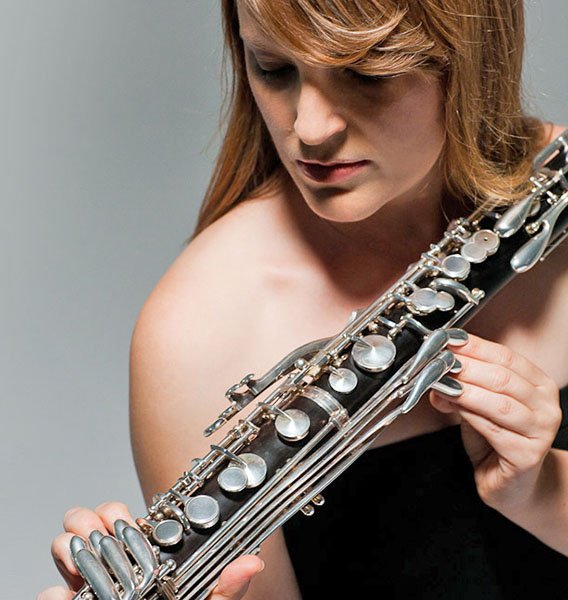Zander and the BPO Exhilarate

Rarely does the Boston Philharmonic program 20th-century works exclusively, never mind two-thirds American ones, so John Harbison’s Third Symphony, George Gershwin’s Rhapsody in Blue, and Igor Stravinsky’s Petrushka made for a surprising season-opening weekend. Yet the decision possessed a certain logic: Harbison has deep roots in jazz, hence the Gershwin, and a deep love of Stravinsky. But what held the program together was conductor Benjamin Zander’s exquisite sensibility and the orchestra’s extroverted playing. I attended on Sunday.
Harbison’s Third Symphony was commissioned by David Zinman and the Baltimore Symphony Orchestra, and they gave the work its premiere on February 26, 1991. James Levine and the BSO have offered the only previous Boston performances, in 2003 and 2010; the 2010 effort is still available as a BSO download. Levine also has a 2002 recording of the piece with the Munich Philharmonic out on the Oehms label.
Running just under 25 minutes, the symphony comprises five continuous movements of four to six minutes each, marked “Sconsolato,” “Nostalgico,” “Militante,” “Appassionato,” and “Esuberante.” Harbison has explained that “The piece’s central issue is recovering from its starting point, i.e. finding a way to continue after starting with a conclusion.”
I’d have said the symphony actually starts with a question, a big three-note sigh that challenges the rest of the orchestra to find some sunshine. The response is immediate, especially from the percussion (the symphony is dedicated to Christopher Rouse), but not effective. After several failed attempts to quell the sigh, the orchestra switches to a viola cantilena over plucked strings. That simply instigates more violence, and the movement ends in a murky mood, no solution.
Harbison has said that the “Nostalgico” was inspired by his walks past the carillon of the Church of Sant’Ilario in Genoa. Faint tintinnabulation is followed by apprehensive, Holstian brass and then folky winds, as if each section of the orchestra, reflecting on history, had its own story to tell. The “Militante” pits galumphing brass against the skeletal sounds of marimba, xylophone, and glockenspiel; in the “Appassionato” the first violins go searching, à la the first movement of Mahler’s Tenth Symphony, before the brass grow in intensity over a booming drum. This too subsides, and the “Esuberante” throws out hints of “Le sacre du printemps” and the plainsong “Dies irae” before a tick-tock leads into the jazzy final section, a cacophonous affirmation of sorts.
When André Previn and the London Symphony Orchestra performed the symphony at the Barbican in February 2012, the Financial Times’ Andrew Clark and the New Statesman’s Alexandra Coghlan diverged. Clark described Harbison as “a dyed-in-the-wool New England academic composer” who “uses orchestration to pump up a symphony that goes nowhere” and concluded, “American only in its occasional raucousness and smoochy rhythm, the music is too monotone in tempo and argument to grip the imagination.” Coghlan thought that the movements, with their “programmatic” titles, lent themselves to “evocation,” particularly “Nostalgico.”
It’s easy to see what frustrated Clark — Harbison demands a multitude of instruments (you don’t find a lujon in just any orchestra) for a brief work that doesn’t go anywhere obvious. It may be a symphony you have to embrace before you can love it. Sunday at Sanders Theatre, Zander embraced it. Those big sighs seemed a little too compressed to register fully, and the entire first movement sounded more exasperated than disconsolate. But what clarity and ferocity! In the “Nostalgico,” Zander brought out the plethora of different bell sounds; the “Militante” became a battle between the orchestra and the mallet instruments. Anguish built and dissipated in the “Appassionato”; the orchestra had no trouble finding its groove in the “Esuberante.”
This performance had more energy than I recall from Levine’s two recordings, even though the timing was about the same. It was demonic in its nervous intensity, but never driven. It made a good case for Harbison’s elaborate orchestration. At no point did it sound academic.
Never academic, Gershwin described Rhapsody in Blue as a “musical kaleidoscope of America, of our vast melting pot, of our unduplicated national pep, of our metropolitan madness.” Almost from the beginning his piece was the stuff of American legend. It was commissioned by jazz-band leader Paul Whiteman and written in just five weeks. The original title was An American Rhapsody, but after a visit to see the works of James Whistler and a suggestion from George’s brother Ira, it became Rhapsody in Blue.
Fritz Kreisler, Walter Damrosch, Leopold Stokowski, John Philip Sousa, Jascha Heifetz, and Sergei Rachmaninov attended the premiere on February 12, 1924, at New York’s Aeolian Hall, where Whiteman led his own jazz band, the Palais Royal Orchestra, augmented by strings, in an orchestration facilitated by Ferde Grofé, with Gershwin himself at the piano. Grofé subsequently created an arrangement for piano and symphony orchestra that’s what’s usually heard today; apart from the four saxophones and the banjo, his orchestra isn’t so different from that of late Mahler or Strauss.
Gershwin’s own 1924 recording of an abbreviated version of Rhapsody in Blue is jazzy and, well, rhapsodic. Almost a century after the premiere, the piece has been “classicalized”; even Leonard Bernstein’s spontaneous-sounding 1959 recording is relatively civilized, though it’s a long way from the romantic self-indulgence of Lang Lang. (Yes, Lang Lang does play Rhapsody in Blue.) And the early 2-strip Tecnicolo extravaganza, King of Jazz exults grittily in the Rhapsody.
Listen to King of Jazz- Rhapsody in Blue Sequence
Zander’s soloist, Gershwin specialist Kevin Cole, was crisp and light-hearted, and he clearly revels in the piece, but though I heard distinctive pianism, I didn’t hear a distinctive interpretation. Instead it was Zander and the orchestra who grabbed the spotlight.
Rane Moore’s articulation of the celebrated opening clarinet glissando had attitude, the “Train” theme had the right Latin rhythm, and Zander got as much of a jazz sensibility as you can expect from a symphony orchestra.
There was a characterful solo from oboist Jennifer Slowik and a sweet one from concertmaster Joanna Kurkowicz. When, a little more than halfway through the piece, the broad romantic theme appears, Zander gave it full value without swooning; it was gracious, almost shy.
Cole excelled in his encore, an arrangement of Gershwin’s “Fascinating Rhythm” where he seemed more in his element, voluble and swinging. Zander danced along as he retreated to the back of the stage. When a bouquet was handed up from the audience, Cole, in a gallant gesture, gave it to Kurkowicz.
Petrushka was conceived in Switzerland in the summer of 1910, after the success of the composer’s Firebird. Stravinsky was meant to be developing Le sacre du printemps, but he gave himself a brief respite and worked up a concert burlesque for piano and orchestra about an obstreperous puppet. When Serge Diaghilev, the founder of the Ballets Russes, visited and heard the score, he encouraged Stravinsky to expand it into a ballet. Choreographed by Michel Fokine and designed by Alexandre Benois, Petrushka premiered at Paris’s Théâtre du Châtelet on June 13, 1911, with Pierre Monteux on the podium and Vaslav Nijinsky in the title role.
The setting is a Shrovetide fair in St. Petersburg’s Admiralty Square in 1830. Stravinsky was inspired by the Petrushka puppet popular at Russian Shrovetide fairs, a cousin to the Pulcinella of Italy’s commedia dell’arte and the Punch of England’s Punch and Judy puppet shows. In Benois’s scenario, however, Petrushka is more like the French pantomime character Pierrot, who loves Columbine but she loves Harlequin. Here Columbine is a Ballerina, and Harlequin becomes a Moor.
The original 1911 score for Petrushka called for a large orchestra that included quadruple winds and French horns, plus two cornets and an offstage snare drum and tenor drum. In 1947, Stravinsky revised the score, partly to preserve his copyright, but also to pare down the orchestra for the sake of transparency and to reflect his later style.
There’s no consensus on which version is preferable. In his own 1960 Columbia recording, Stravinsky chose the original; that’s also what Pierre Boulez conducts in his two Columbia recordings. Leonard Bernstein opted for the 1947 revision, as did Seiji Ozawa in his 1969 RCA recording with the BSO. That’s the version Zander did when he presented (and recorded) Petrushka with the BPO in 1995, and the one he did on Sunday.
Whichever version is selected, the performance almost invariably runs between 34 and 36 minutes — Stravinsky didn’t leave a lot of wiggle room. French conductor François-Xavier Roth has made a vibrant recording of Petrushka on period instruments. (He also performed the piece with the BSO in January 2016.) There’s a video of a 2011 performance with current BSO music director Andris Nelsons leading the Concertgebouw in which Nelsons is a picture of demonic, delighted glee, and it shows in the orchestra’s playing.
It’s not as if the piece, which has many anticipations of Sacre, had become easier to perform over the past 106 years. Right at the beginning, the clarinets and French horns have to create a buzzy effect by trilling at different speeds. Stravinsky’s time signatures can switch from 8/8 to 5/8 to 7/8 in a heartbeat; you might easily have some parts of orchestra playing in 5/8 and others in 2/4. In the Moor’s Room, the Ballerina waltzes in 3/4 while the Moor partners her in 2/4.
Then there’s the question of how, without dancers, a concert audience can be expected to follow the action of this ballet. Zander’s answer to that was supertitles. At Sanders Theater, they were legible, they were detailed, and the timing was spot-on. Some details were puzzling: my 1911 score doesn’t say anything about the two street dancers pulling each other’s hair. But this was an excellent idea, and excellently implemented.
Zander’s performance, like his 1995 recording, was more straight-faced than some. At first this bright but measured, steady approach was a little disappointing. Where was the thrust, the Russian emotion? But it turned out there was ample compensation. Zander preserved a dance pulse throughout; gradually one got the sense of that pulse, and Stravinsky’s architecture came to life, in the same way that the Magician’s puppets do. When the organ grinder appeared, Zander was able to convey the new mood without having to slow the tempo; this was his approach throughout, and throughout it worked. The triangle for the first street dancer was poignantly audible; Ann Bobo’s flute solo for the Magician was just plain poignant.
The second tableau, in Petrushka’s Room, featured pianist Rasa Vitkauskaite’s firm but flexible characterization of the title puppet. The third tableau, in the Moor’s Room, found the Ballerina dancing to the tender duet of Bobo’s flute and Elmer Churampi’s trumpet in a pair of waltz tunes Stravinsky borrowed from Viennese composer Joseph Lanner’s Steyrische Tänze and Die Schönbrunner. Both tableaux were also graced by contributions from Andrew van der Paart’s English horn.

Rasa Vitkauskaite, pianist in Petrushka
Bernstein described the beginning of the final tableau, back at the Shrovetide fair, as the sound of “one huge Russian accordion puffing and wheezing.” Here again the various sections were well delineated. The two Russian folk songs that make up the Nursemaids’ Dance, “Ya vechor mlada” and “Akh, vy seni, moi seni,”were sharply contrasted, and when the orchestra has to play both at once, eachwas palpable. The clarinets were shrill and the lower strings lumbering for the bear that dances on its hind legs; when the Gypsies appeared, the tambourine was not shy.
At 37 minutes, this Petrushka felt expansive, and all the better for it; the interpretation breathed without ever sagging. And the supertitles made it just that much better.
 Jeffrey Gantz - The Boston Musical Intelligencer
Jeffrey Gantz - The Boston Musical Intelligencer